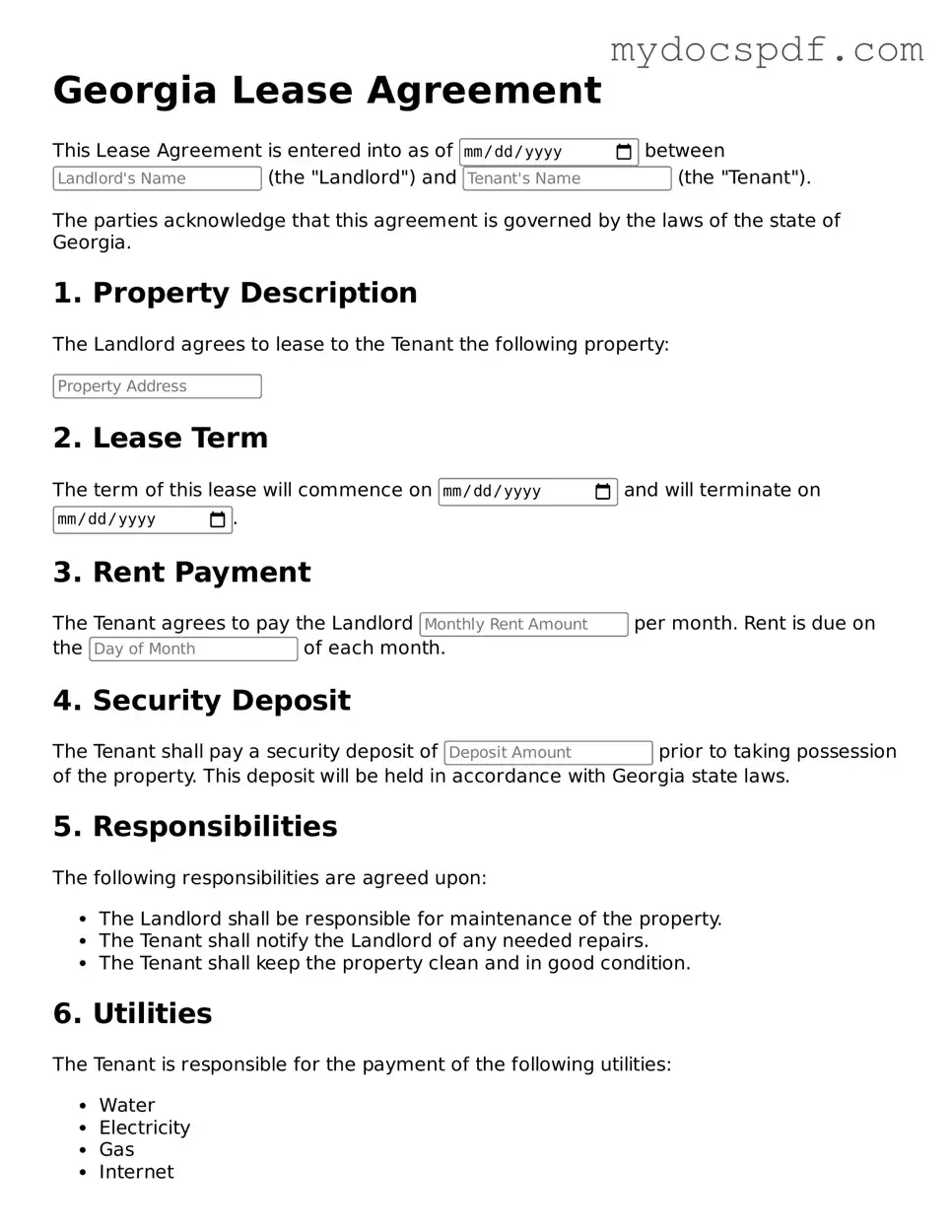Fillable Georgia Lease Agreement Document
A Georgia Lease Agreement form is a legally binding document that outlines the terms and conditions between a landlord and a tenant for renting residential or commercial property. This agreement serves to protect the rights of both parties, ensuring clarity in expectations and responsibilities. Understanding the key components of this form is essential for a smooth leasing experience.
Access Editor Here
